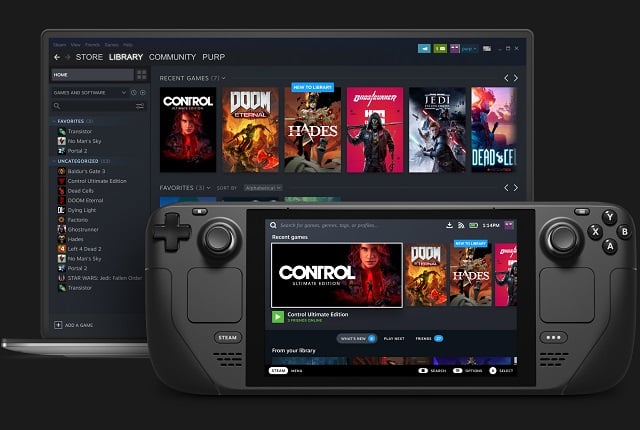Steam Deck is a Linux desktop trojan horse

Switching from Windows to Linux is pretty easy nowadays -- unless you're a gamer. If you are into PC gaming, Windows is still the best operating system for maximum compatibility and performance. Gaming on Linux has gotten better thanks to Steam's Proton, but still, Windows clearly reigns supreme.
With all of that said, Linux gaming is about to get much more possible. You see, Valve's new handheld gaming console is basically just a PC running an Arch Linux-based operating system. The OS is named "SteamOS" and it uses KDE Plasma.
What is this new device called? Valve calls it "Steam Deck," and it starts at just $399. At this price, it not much more expensive than the much less powerful (and less capable) Nintendo Switch. Steam Deck is finally bringing Linux gaming to the mainstream.
"On Steam Deck, your games run on a different operating system than the one on your desktop PC. It's a new version of SteamOS, built with Steam Deck in mind and optimized for a handheld gaming experience. It comes with Proton, a compatibility layer that makes it possible to run your games without any porting work needed from developers. For Deck, we're vastly improving Proton's game compatibility and support for anti-cheat solutions by working directly with the vendors," explains Valve.
The company further says, "Steam Deck is Bluetooth-ready, and its USB-C port can handle all sorts of I/O. Want to have a fighting tournament on the go? Covered. Want to play with Bluetooth mouse and keyboard? Covered. Want to pair your favorite Bluetooth headphones? You're good to go. Deck can be plugged in to your TV, monitor, or even your old CRT if you have the right cables. When docked, the Steam Deck’s USB-C port can carry video, audio, input, etc. Just plug in your peripherals, or use the official dock, and you’re ready to go."
Valve shares specifications below.
Compute
- Processor: AMD APU
- CPU: Zen 2 4c/8t, 2.4-3.5GHz (up to 448 GFlops FP32)
- GPU: 8 RDNA 2 CUs, 1.0-1.6GHz (up to 1.6 TFlops FP32)
- APU power: 4-15WRAM16 GB LPDDR5 RAM (5500 MT/s)
- Storage: 64 GB eMMC (PCIe Gen 2 x1), 256 GB NVMe SSD (PCIe Gen 3 x4), 512 GB high-speed NVMe SSD (PCIe Gen 3 x4)
Controls and Input
- Gamepad controls: A B X Y buttons, D-pad, L & R analog triggers, L & R bumpers, View & Menu buttons, 4 x assignable grip buttons
- Thumbsticks: 2 x full-size analog sticks with capacitive touch
- Haptics: HD haptics
- Trackpads: 2 x 32.5mm square trackpads with haptic feedback
- Pressure-sensitivity for configurable click strengthGyro6-Axis IMU
Display
- Resolution: 1280 x 800px (16:10 aspect ratio)
- Type: Optically bonded LCD for enhanced readability
- Display size: 7" diagonal
- Brightness: 400 nits typical
- Refresh rate: 60Hz
- Touch enabled: Yes
- Sensors: Ambient light sensor
Connectivity
- Bluetooth: Bluetooth 5.0 (support for controllers, accessories and audio)
- Wi-Fi: Dual-band Wi-Fi radio, 2.4GHz and 5GHz, 2 x 2 MIMO, IEEE 802.11a/b/g/n/ac
Size and Weight
- Size: 298mm x 117mm x 49mm
- Weight: Approx. 669 grams
Here's the thing though -- Steam Deck isn't limited to games. You can connect it to a keyboard, mouse, and monitor and you have a full-fledged Linux desktop. Valve will even sell an official dock for this purpose.
Families, college students, business users, and more can use this "gaming console" as their sole PC. In fact, it could be said that Steam Deck is a Linux desktop trojan horse -- you invite a game console into your home and all of a sudden a Linux computer is there too! With Steam Deck, Valve may be able to do what other companies could not -- make desktop Linux popular.
There are three variants of the Steam Deck from which to choose, and you can pre-order them here now. The $399 base model comes with a 64GB eMMC drive, so I would suggest skipping it and opting for a model with faster storage. For $529 you get a 256GB NVMe SSD, while $649 gets you a 512GB NVMe SSD. As of today, it is scheduled to begin shipping in Q2 of 2022.
